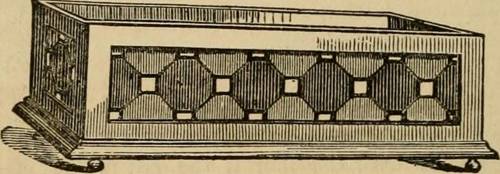
FAQ About Indoor Plant Moisture Retention Techniques

What are some effective indoor plant moisture retention techniques?
Some effective techniques for retaining moisture in indoor plants include using mulches like coconut coir or bark chips, implementing self-watering systems, choosing the right potting soil with moisture-retaining properties, and placing plants away from drafts and direct sunlight which can cause rapid evaporation.

How does mulch help retain moisture for indoor plants?
Mulch is a protective layer placed over the soil. It reduces the rate of evaporation, maintains a consistent soil temperature, and can help prevent weeds, which compete for water. Using mulch like bark chips can be especially beneficial for indoor plants, extending the time between waterings.

What types of mulch are suitable for indoor plants?
Suitable mulches for indoor plants include organic options like coconut coir, bark chips, and leaf mold. These mulches not only retain moisture but also break down to provide nutrients over time. Avoid using heavy or compact mulches that limit air circulation or water penetration.

Can self-watering systems be used for all indoor plants?
Self-watering systems can be adapted for most indoor plants, but they are particularly beneficial for species that require consistent moisture levels. However, they may not be necessary or suitable for plants such as succulents that prefer drier soil. It's important to adjust the system according to the specific water needs of each plant.

How do self-watering pots work?
Self-watering pots contain a reservoir at the base that holds water. A wicking system delivers water from the reservoir to the plant’s roots as needed, based on the soil’s moisture level. This system ensures consistent moisture without overwatering, making plant care easier and more efficient.

What are the benefits of using self-watering pots for indoor plants?
Self-watering pots help maintain consistent soil moisture, reducing the risk of both overwatering and underwatering. They are convenient for plant owners who travel frequently or those who may forget regular watering. Additionally, these pots can reduce water usage and encourage healthy root growth.

Is specialized soil necessary for moisture retention in indoor plants?
Yes, specialized soils are beneficial as they are formulated to retain moisture while providing adequate drainage and aeration. Many potting mixes designed for indoor plants contain components like peat moss, vermiculite, or perlite, which help maintain moisture levels while preventing root rot.

How often should indoor plants be watered to maintain proper moisture levels?
The frequency of watering depends on several factors, including plant species, pot size, and environmental conditions such as light and humidity. Generally, allowing the top inch of soil to dry out before watering is a good rule of thumb. Checking soil moisture with a finger or moisture meter can provide more accurate guidance.

What role does humidity play in indoor plant moisture retention?
Humidity plays a significant role in preventing water loss through transpiration, which is the evaporation of water from plant leaves. Higher humidity levels can help maintain moisture within the plant and reduce the frequency of watering needed. Humidifiers or regular misting can boost humidity for indoor plants.

Can placing indoor plants close together help with moisture retention?
Yes, placing plants close together can create a microenvironment that increases the local humidity around them. This can reduce moisture loss from the soil and the plants themselves, mimicking a more natural habitat and helping with moisture retention.

Why is it important to avoid overwatering when trying to retain moisture in indoor plants?
Overwatering can lead to root rot, a condition where plant roots are suffocated by waterlogged soil and begin to decay. This negates the benefits of moisture retention techniques. It is crucial to ensure that plant pots have proper drainage and that excess water can escape.

How can I tell if my indoor plant is getting too much or too little water?
Signs of overwatering include yellow leaves, wilting despite wet soil, and moldy or smelly soil. Underwatering symptoms include dry, crispy leaves, wilting when the soil is dry, and slow growth. Regularly check soil moisture and adjust your watering schedule accordingly.

Are there specific plants that benefit more from moisture retention techniques?
Plants that thrive in consistently moist conditions, such as ferns, peace lilies, and calatheas, benefit significantly from moisture retention techniques. These plants are more sensitive to dry conditions and may suffer if not kept adequately hydrated.

Do indoor plant placement and environment affect moisture retention?
Yes, placement and environment greatly affect moisture retention. Placing plants away from heat sources, drafts, and direct sunlight can reduce evaporation rates. Additionally, maintaining consistent room temperatures and humidity levels supports optimal plant health.

Is it useful to use moisture meters for indoor plants?
Moisture meters can be quite helpful in determining the water needs of indoor plants. They offer an accurate assessment of the soil’s moisture content, allowing plant owners to make informed watering decisions. This tool is especially valuable for less experienced gardeners.

Can the type of pot affect moisture retention for indoor plants?
Yes, the type of pot can significantly impact moisture retention. Pots made from porous materials like terracotta allow for faster evaporation and may require more frequent watering than non-porous materials like plastic or glazed ceramic. Choosing the right pot can help maintain desired moisture levels.

How can I increase the humidity for my indoor plants naturally?
Increasing humidity naturally can be achieved by grouping plants together, using pebble trays filled with water beneath pots, or periodically misting the plants. Additionally, placing bowls of water near radiators can help as the heat will encourage evaporation, increasing humidity.

What common mistakes should be avoided in maintaining moisture for indoor plants?
Avoid overwatering, using non-draining pots, and neglecting to adapt watering frequency based on seasonal and environmental changes. Being mindful of these factors ensures effective moisture retention while preventing water-related issues such as root rot.

Can layering stones at the bottom of the pot help with moisture retention?
Layering stones at the bottom of the pot can aid drainage but does not necessarily help with moisture retention. Instead, ensuring that the soil mix has good composition for retention while still allowing excess water to drain is more effective for preventing water retention issues.

How does temperature affect indoor plant moisture levels?
Temperature affects evaporation rates, which in turn influences how often you need to water your plants. Higher temperatures can cause quicker evaporation, necessitating more frequent watering, while cooler temperatures might reduce evaporation and require less frequent watering.
